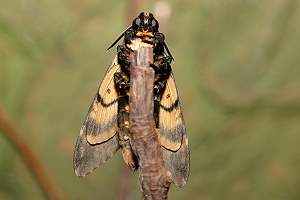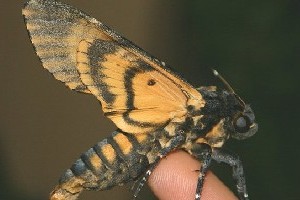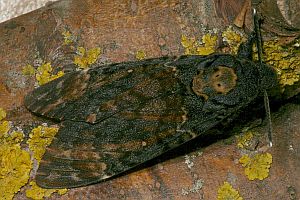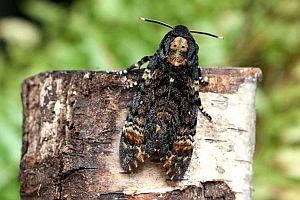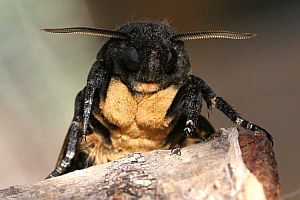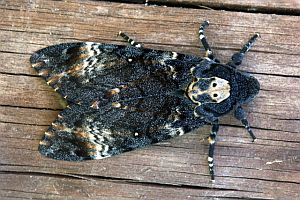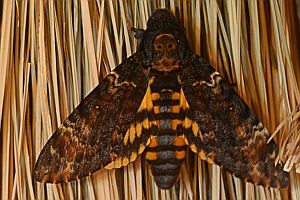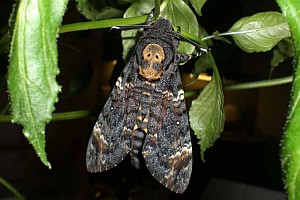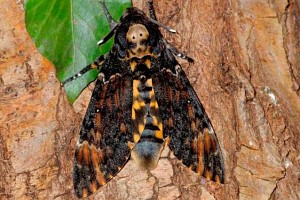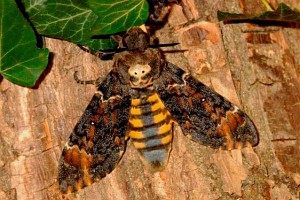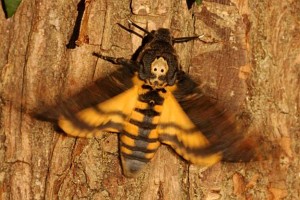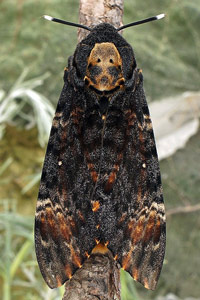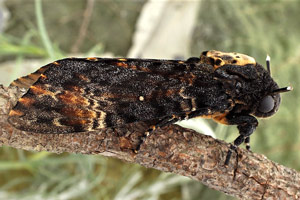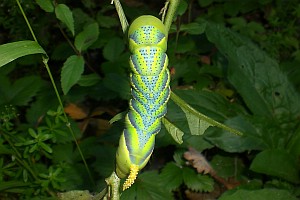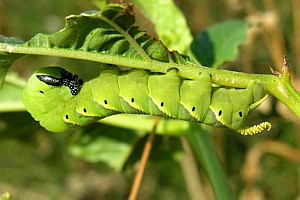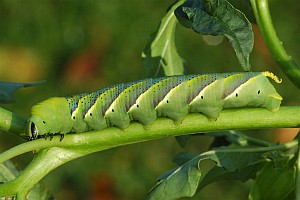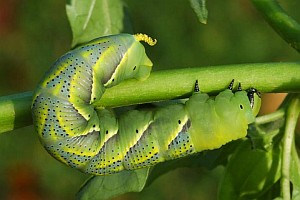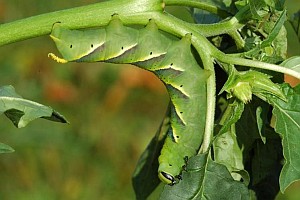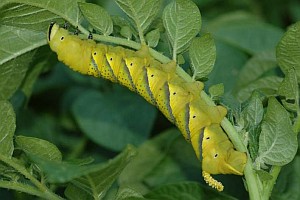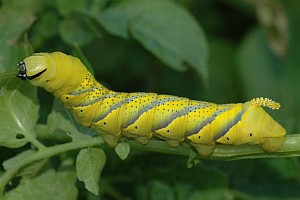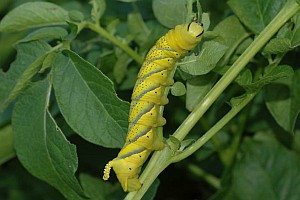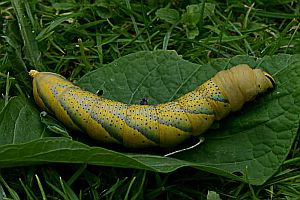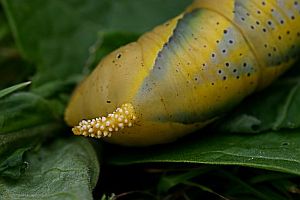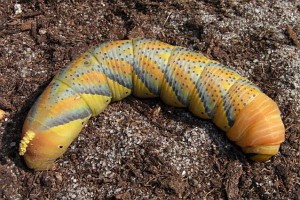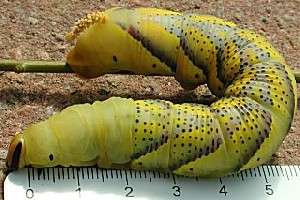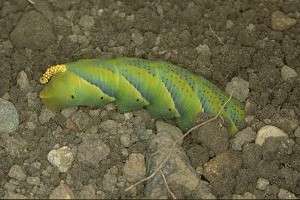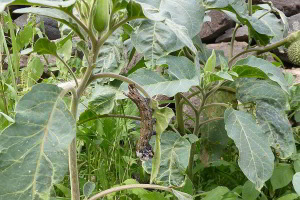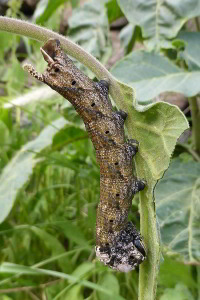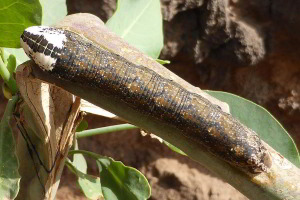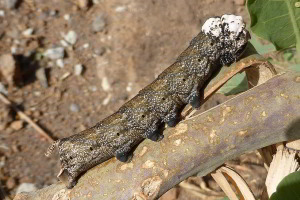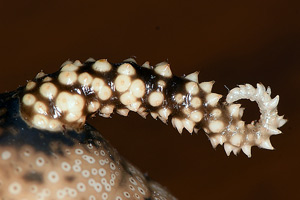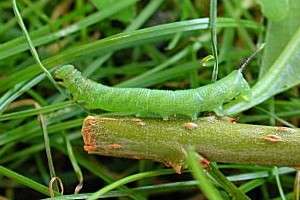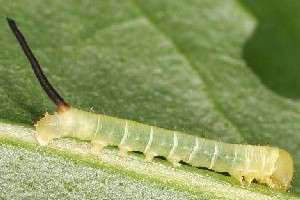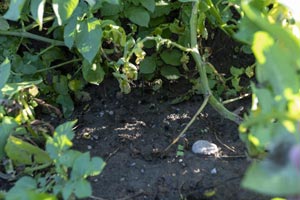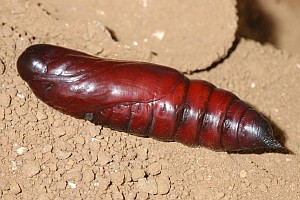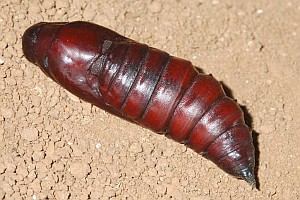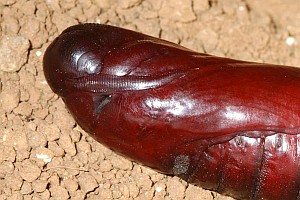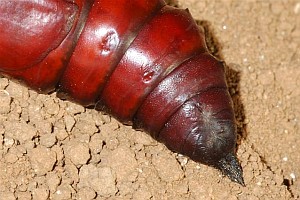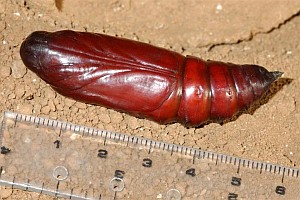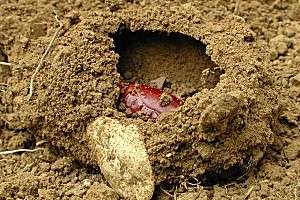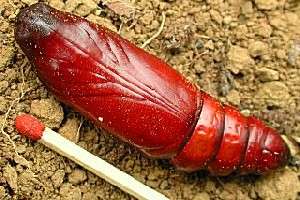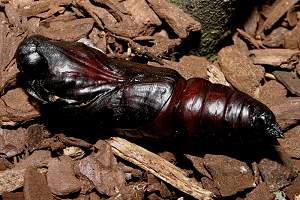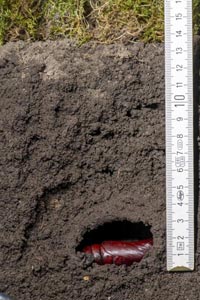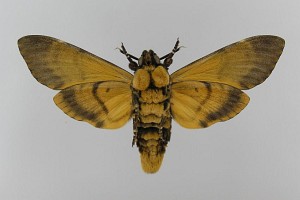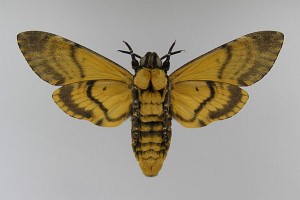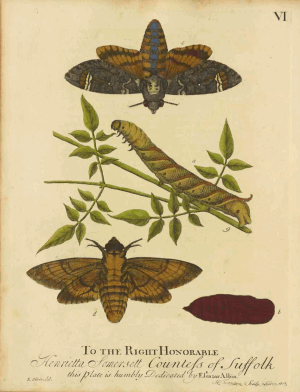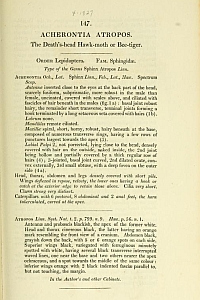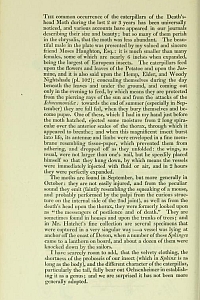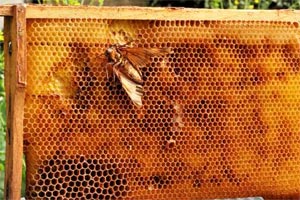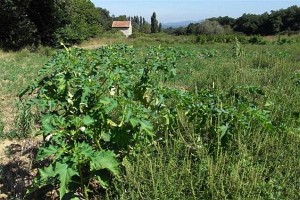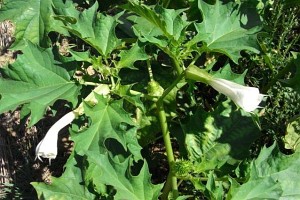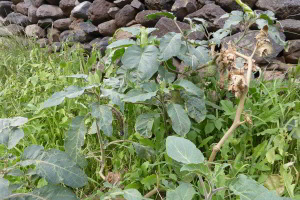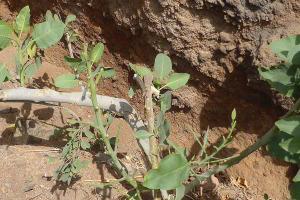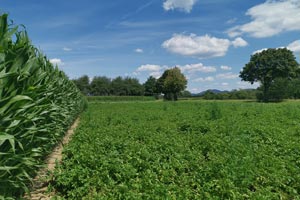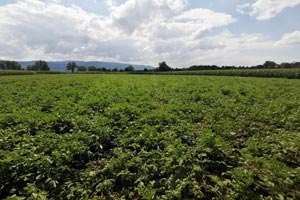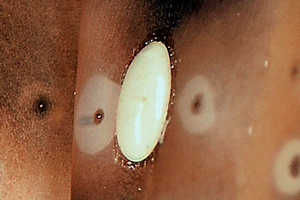Wanderfalter tropischer Herkunft, im Mittelmeerraum teilweise bodenständig. Falter und Raupe im Frühsommer bis Herbst. Raupenfunde in Mitteleuropa vor allem an Kartoffelblättern (Solanum tuberosum), aber auch an etlichen weiteren Pflanzenarten, Puppe kann überwintern, stirbt jedoch unter 0°C ab.
Länder:

 +58Kontinente:EUASAF
+58Kontinente:EUASAF


 +58Kontinente:EUASAF
+58Kontinente:EUASAFNeues Layout der Navigation (Beta Test)
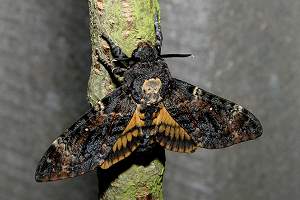
Falter
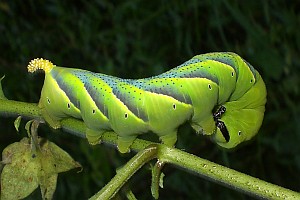
Ausgewachsene Raupe

Jüngere Raupenstadien
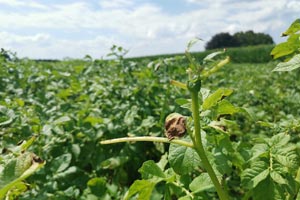
Fraßspuren und Befallsbild
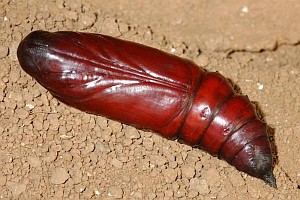
Puppe
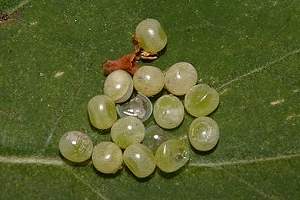
Ei
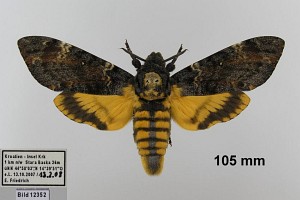
Männchen
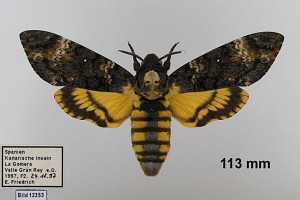
Weibchen
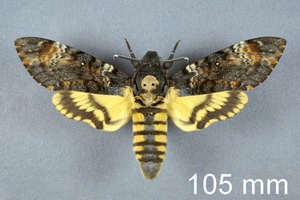
Geschlecht nicht bestimmt
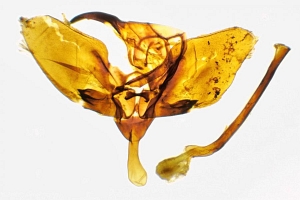
Genitalien ♂
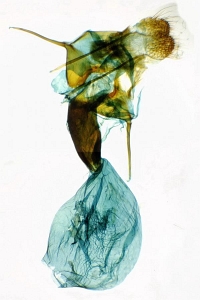
Genitalien ♀

Erstbeschreibung
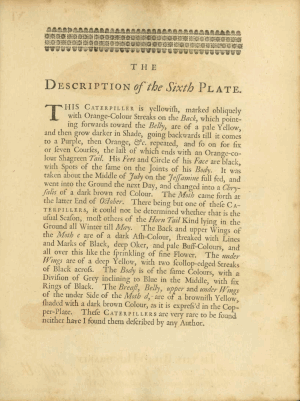
Bezug der Indikation „Alb. ins. t. 6.“
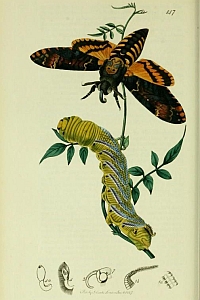
Beschreibung von John Curtis
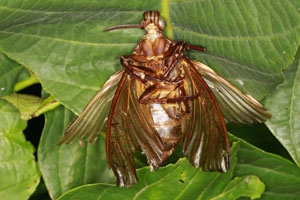
Lebensweise
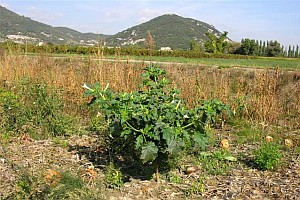
Habitat und Raupennahrungspflanzen
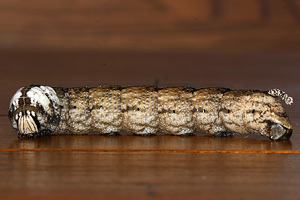
Parasitoide

Etymologie (Namenserklärung)
LebendfotosDiagnoseGenitalienBiologieWeitere InformationenAndere KombinationenSynonymeLiteraturInformationen auf anderen Websites (externe Links)
1. Lebendfotos
1.1. Falter
1: 8. September 2004 (Foto: Thomas Ziebarth) [Erregungslaute eines Falters] (Tonaufnahme: Thomas Ziebarth)
2: 4. September 2004, 40 Minuten alter Falter (Foto: Thomas Ziebarth)
3: (Foto: Carsten Wilkening)
4: Deutschland, Bayern, Aichach-Sulzbach, Lichtfang, 28. September 2006 (Foto: Michel Kettner), det. Michel KettnerForum
5-6: ♂, Schweiz, Graubünden, Chur, 650 m, Freilandfund, 23. Oktober 2006 (Fotos: Heiner Ziegler), det. Heiner ZieglerForum
7: Spanien, Falset, ca. 100 km südl. Barcelona, 22. April 2007 (Foto: Herbert Stern), det. Herbert SternForum
8: Deutschland, Thüringen, Reichenbach b. Hermsdorf, 320 m, Hausgarten, Raupe an Engelstrompete 24. Juli 2007, e.l. 6. September 2007 (Foto: Helga Schöps), cult. & det. Helga SchöpsForum
9: Schweiz, Kanton St. Gallen, Wanderweg Richtung Falknis bei St. Luzisteig, ca. 650 m, Raupenfund an Schwarzer Tollkirsche (Atropa belladonna) am 22. August 2010, e.l. 3. Oktober 2010 (leg., cult., det. & Foto: Andreas Eberli)Forum
10-12: Frankreich, Drôme, Grâne (D113), Forêt de Marsanne, Raupenfund am 1. September 2008, e.l. 18. November 2008 (leg., cult., det. & Fotos: Allan Liosi)Forum
13-14: Spanien, Andalusien, Almeria, Umgebung Sorbas, 442 m, 37.083078, -2.093012, 30. Mai 2022, am Licht (leg., gen. det. & fot.: Friedmar Graf)Forum
1.2. Ausgewachsene Raupe
1-2: Schweiz, Kanton St. Gallen, Wanderweg Richtung Falknis bei St. Luzisteig, ca. 650 m, an Schwarzer Tollkirsche (Atropa belladonna), 22. August 2010 (leg., cult., det. & Fotos: Andreas Eberli)Forum
3-6: Frankreich, Ardèche, Verviers, Brachfelder entlang der Rhône, an Datura stramonium, 2. Oktober 2007 (det. & Freilandfoto [3] und Studiofotos [4-6] am 6. Oktober 2007: Allan Liosi)Forum
7-9: 15 cm lang und 2 cm dick, Österreich, Steiermark, Mitteregg im Sausal, Garten, 400 m, an Kartoffel, 14. Juli 2010 (det. & Fotos: Leo Kuzmits)Forum
10-11: verpuppungsreif, Deutschland, Thüringen, Reichenbach b. Hermsdorf, 320 m, Hausgarten, an Engelstrompete, 24. Juli 2007 (Fotos: Helga Schöps), det. Helga SchöpsForum
12: verpuppungsreif, Frankreich, Drôme, Grâne (D113), Forêt de Marsanne, 1. September 2008 (leg., cult., det. & Foto: Allan Liosi)Forum
13-15: Funddaten unbekannt (Fotos: Walter Schön)
16-17: braune Form, Spanien, Kanarische Inseln, Teneriffa, nordöstlich Santa Cruz, Maria Jiménez, 50 m, an Datura innoxia, 2. Januar 2017 (det. & Freilandfoto: Egbert Friedrich)Forum
18-19: braune Form, Spanien, Kanarische Inseln, Teneriffa, östlich San Andres, Playa de las Gaviotas, 10 m, an Nicotiana glauca, 8. Januar 2017 (det. & Freilandfoto: Egbert Friedrich)Forum
20: Analhorn: Deutschland, Bayern, Oberbayern, Übersee, ca. 530 m, 21. August 2022 (Foto: Peter Ginzinger)Forum
1.3. Jüngere Raupenstadien
1: halb ausgewachsene Raupe, (Foto: Walter Schön)
2: Jungraupe, (Foto: Walter Schön)
3: Eiraupe, (Foto: Ingrid Altmann)Forum
1.4. Fraßspuren und Befallsbild
1.5. Puppe
1-6: Frankreich, Ardèche, Verviers, Raupenfund am 2. Oktober 2007 (leg., cult., det. & Studiofotos am 6. November 2007: Allan Liosi)Forum
7: Erdhöhle, (Foto: Walter Schön)
8: (Foto: Walter Schön)
9: Schlupf, 4. September 2004 (Foto: Thomas Ziebarth)
10: Schweiz, Kanton Bern, Bargen, Kartoffelacker, 445 m, Raupe leg. 5. August 2021, Foto 19. August 2021 (cult. & Studiofoto: Martin Albrecht)Forum
1.6. Ei
2. Diagnose
2.1. Männchen
2.2. Weibchen
2.3. Geschlecht nicht bestimmt
1: Deutschland, Baden-Württemberg, 75203 Königsbach, Raupe an Kartoffelfkraut, 190 m, 12. November 1961, (Treibzucht) (cult., det. & Foto: Hans-Peter Deuring)
2.4. Genitalien
2.4.1. Männchen
1: ♂, Funddaten unbekannt (cult., det. & fot.: Horst Pichler)Forum
2.4.2. Weibchen
1: ♀, Funddaten unbekannt (cult., det. & fot.: Horst Pichler)Forum
2.5. Erstbeschreibung
1: Linnaeus (1758: 490) [nach Copyright-freiem Scan auf www.biodiversitylibrary.org]
2.6. Bezug der Indikation „Alb. ins. t. 6.“
1-2: Albin (1720: pl. VI) [nach Copyright-freien Scans auf www.biodiversitylibrary.org]
2.7. Beschreibung von John Curtis
1-3: Curtis (1823-1840) [nach Copyright-freien Scans auf www.biodiversitylibrary.org]
3. Biologie
3.1. Lebensweise
Die Falter dringen in Bienenstöcke ein, um an den Honig zu gelangen.
1: Überreste, im Eingangsbereich eines Bienenstocks gefunden, Deutschland, Rheinland-Pfalz, Südliches Rheinhessen, Worms (Ortslage), 1. September 2016 (leg., det. & fot.: Gerd Reder), conf. Thomas FähnrichForum
2: Totfund auf einer Wabe in einem Bienenstock, Deutschland, Rheinland-Pfalz, 56753 Mertloch, 206 m, Oktober 2022 (Foto: Herbert Stern), leg. Guido AckermannForum
3.2. Habitat und Raupennahrungspflanzen
1: im Vordergrund die Raupenfundpflanze Datura stramonium: Frankreich, Ardèche, Verviers, 2. Oktober 2007 (Foto: Allan Liosi), det. Allan LiosiForum
2-3: Brachacker an der Rhône mit Datura stramonium: Frankreich, Rhône-Alpes, Drôme, 26780 Châteauneuf-du-Rhône, 44° 29' 0” N, 4° 43' 0” E, 2. September 2008 (Fotos: Allan Liosi)Forum
4: Datura innoxia: Spanien, Kanarische Inseln, Teneriffa, nordöstlich Santa Cruz, Maria Jiménez, 50 m, 2. Januar 2017 (Foto: Egbert Friedrich)Forum
5: Nicotiana glauca: Spanien, Kanarische Inseln, Teneriffa, östlich San Andres, Playa de las Gaviotas, 10 m, 8. Januar 2017 (Foto: Egbert Friedrich)Forum
6-7: Kartoffelacker als Larvalhabitat, Deutschland, Baden-Württemberg, Mittler Oberrhein, Ottersweier, 18. Juli 2020 (Fotos: Michael Levin)Forum
3.3. Parasitoide
1-2: Eier von vermutlich Winthemia cruentata (Tachinidae, Raupenfliege): Deutschland, Bayern, Oberbayern, Übersee, ca. 530 m, 21. August 2022 (Foto: Peter Ginzinger), det. Parasitoid Tina SchulzForum
4. Weitere Informationen
4.1. Etymologie (Namenserklärung)
Atropos: „die den Lebensfaden abschneidende gr. [griechische] Schicksalsgöttin.“
Acheron: in der griechischen Mythologie einer der fünf Flüsse der Unterwelt; Fluss des Leides, des Schmerzes, auch Totenfluss. (Herleitung: Tina Schulz)
1: Funddaten unbekannt (Foto: Walter Schön). Der Trivialname „Totenkopf“ bezieht sich auf die markante Zeichnung auf dem Falterrücken.
4.2. Andere Kombinationen
- Sphinx atropos Linnaeus, 1758 [Originalkombination]
4.3. Synonyme
- Atropos solani Oken, 1815
- Acherontia sculda Kirby, 1877
- Acherontia conjuncta Tutt, 1904
- Acherontia extensa Tutt, 1904
- Acherontia flavescens Tutt, 1904
- Acherontia imperfecta Tutt, 1904
- Acherontia intermedia Tutt, 1904
- Acherontia obsoleta Tutt, 1904
- Acherontia suffusa Tutt, 1904
- Acherontia variegata Tutt, 1904
- Acherontia virgata Tutt, 1904
- Acherontia violacea Lambillion, 1905
- Acherontia charon Closs, 1910
- Acherontia diluta Closs, 1911
- Acherontia obscurata Closs, 1917
- Acherontia myosotis Schawerda, 1919
- Acherontia confluens Dannehl, 1925
- Acherontia moira Dannehl, 1925
- Acherontia pulverata Cockayne, 1953
- Acherontia radiata Cockayne, 1953
- Acherontia griseofasciata Lempke, 1959
4.4. Literatur
- Bezug einer Indikation in der Erstbeschreibung: Albin, E. (1720): A Natural History of English Insects. Illustrated with A Hundred Copper Plates, Curiously Engraven from the Life: And (for those who desire it) Exactly Coloured by the Author: [I]-[XIII], not paginated text page for each plate, pl. I-C. London.
- Curtis, J. (1823-1840): British Entomology; Being Illustrations and Descriptions of the Genera of Insects Found in Great Britain and Ireland: Containing Coloured Figures from Nature of the Most Rare and Beautiful Species, and in Many Instances of the Plants upon which they are Found. Vol V. Lepidoptera, Part I. — [Not paginated]. London (E. Ellis & Co.).
- Harbich, H. (1978): Zur Biologie von Acherontia atropos (Lep., Sphingidae). — Entomologische Zeitschrift 88: (4) 29-36, (10) 101-109. Ex libris Jürgen Rodeland.
- Heinig, S. (1978): Der Totenkopfschwärmer (Acherontia atropos) im Bienenstock (Lep.: Sphingidae). — Entomologische Zeitschrift 88 (21): 237-243. Ex libris Jürgen Rodeland.
- Koren, T. & M. Šašić (2023): An annotated checklist of hawk-moths (Lepidoptera: Sphingidae) of Croatia with their distribution and common names. — Natura Croatica 32 (1): 49–68. [PDF auf hpm.hr]
- Erstbeschreibung: Linnaeus, C. (1758): Systema naturae per regna tria naturae, secundum classes, ordines, genera, species, cum characteribus, differentiis, synonymis, locis. Tomus I. Editio decima, reformata. 1-824. Holmiae (Laurentius Salvius).
- Marktanner, T. (1974): Eine weitere Futterpflanze von Acherontia atropos, der Sommerflieder (Lep., Sphingidae). — Entomologische Zeitschrift 84 (20): 225-227. Ex libris Jürgen Rodeland.
- Marktanner, T. (1976): Die Futterpflanzen von Acherontia atropos (Lep., Sphingidae). — Entomologische Zeitschrift 86 (9): 93-96. Ex libris Jürgen Rodeland.
- Oehmig, S. (1977): Nicotina glauca, eine bisher unbekannte Futterpflanze von Acherontia atropos auf Teneriffa/Kanarische Inseln (Lep., Sphingidae). — Entomologische Zeitschrift 87 (9): 95-96. Ex libris Jürgen Rodeland.
- Pleisch, E. (1997): Acherontia atropos. — In: Pro Natura – Schweizerischer Bund für Naturschutz (Hrsg.) (1997): Schmetterlinge und ihre Lebensräume. Arten, Gefährdung, Schutz. Schweiz und angrenzende Gebiete. Band 2: 522-525. Egg (Fotorotar AG).
- Renner, E. (2023): Der Totenkopfschwärmer Acherontia atropos (Linnaeus, 1758) als standorttreuer Besucher in einem Bienenstock. — Carolinea 80: 25-36. [PDF]
- Ruiz de la Hermosa, A., Truyols-Henares, F. & S. Pinya (2022): Individual photographic identification based on unique colour pattern of the thorax of Acherontia atropos (Linnaeus, 1758) (Lepidoptera: Sphingidae). — SHILAP Revista de lepidopterología 50 (197): 33-41. [PDF auf redalyc.org]
- Traub (1994b) (= Ebert 4), 123-128.
- Westenberger, A. (2024): Fund einer Raupe des Totenkopfschwärmers Acherontia atropos (Linnaeus, 1758) (Lepidoptera: Sphingidae) in Hofheim am Taunus an Schmetterlingsflieder (Buddleja sp.). — Nachrichten des entomologischen Vereins Apollo, Neue Folge 44 (3/4): 153-155.
























































